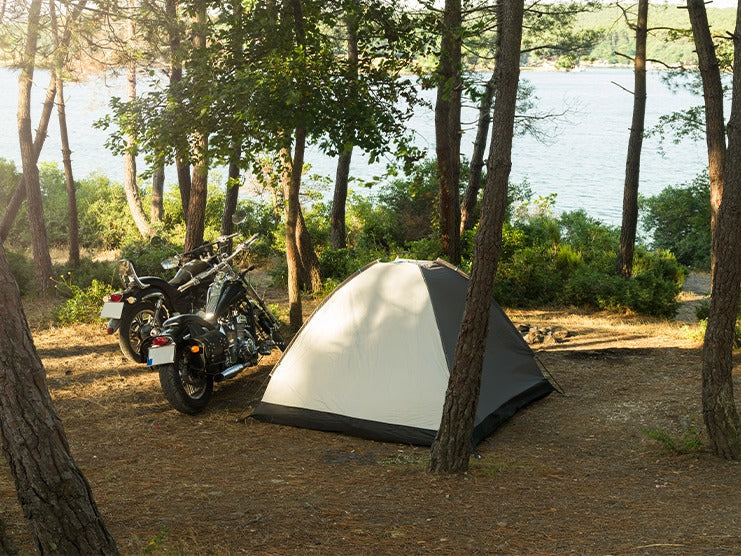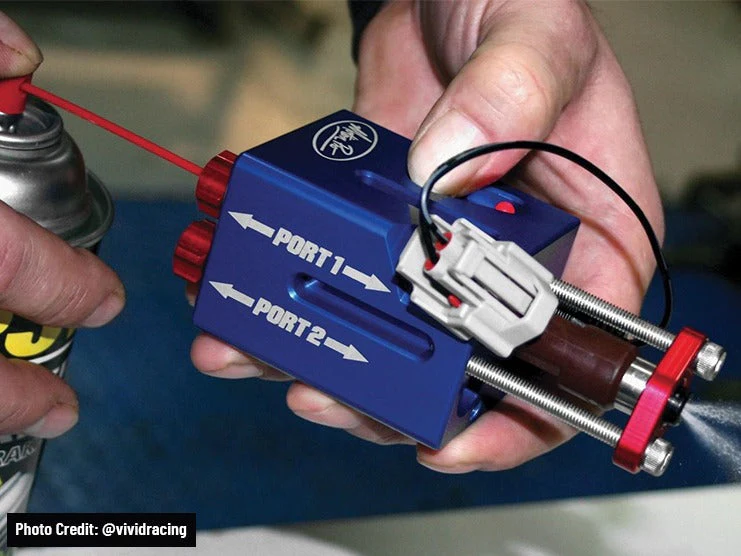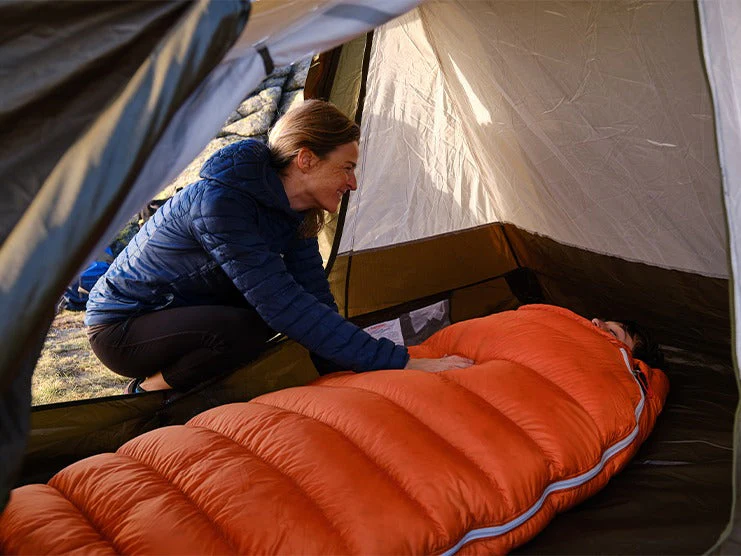To ensure a successful motorcycle camping trip, you need to find the balance between camping and backpacking. Riders can carry all their essentials to a campsite as they would with a car or an RV while keeping their cargo light and compact as with backpacking.
For motorcycle camping trips, tents make up the majority of the motorcycle camping setup. Even with lighter and more innovative options available on the market, such as hammock tents and bivouac bags, tents are still the preferred camping shelter.
It can be difficult to choose a tent with so many available in different fabrics, packed weights and sizes, and weather features, especially if you are a beginner picking a tent for the first time.
Unlike car campers and backpackers, motorcyclists have more difficulty dealing with different weather conditions and terrain. To camp out in the wilderness, they need a reliable tent that keeps them safe, dry, and comfortable.
This article discusses all the essential features to look for in a high-quality motorcycle camping tent when shopping.
Table of Content
1. Things to Consider When Buying a Motorcycle Camping Tent
Over the years, motorcycle tents have seen drastic improvements. Today, moto-camping tents feature innovative fabrics, designs, and styles. The vast selection of moto-camping tents has made it simultaneously easier and harder for riders to find comfortable, spacious, lightweight, rainproof, and wind-resistant shelter. When looking for a tent, consider the following factors:
1.1 Types of Motorcycle Camping Tents
When determining the best type of moto-camping tent for you, factors to look for include packed weight and size, available space, vestibule for your motorcycle, and ease of set-up. The two main types of moto-camping tents are free-standing and non-freestanding.
Non-Freestanding Tents or Stake Supported Tent
Non-freestanding tents require stakes when being set up. These stakes are propped on single or multiple poles. Non-freestanding tents have a single wall and a low roof, with their biggest advantage being that they can be packed small and are lightweight.
However, these tents are not suitable for hard rocky terrain as the stakes cannot always be plunged deep into the ground. Do not hammer the top of the stake into the ground with a mallet or your foot as you may end up damaging the stakes.
| Non-Freestanding Motorcycle Tents | |
|---|---|
| Pros | Cons |
| Pack Small Weigh Less Affordable |
Not Suitable for Sandy and Rocky Terrain Less Comfort and Space Cannot Be Moved Once Set Up |
Semi-Freestanding Tents
Semi-freestanding tents technically fall under the freestanding category but include the best qualities of non-freestanding and freestanding tents.
These tents feature pole structures that help them retain their shape, and single-sided stakes to ensure these tents are sturdy and reach their full size. However, the semi-freestanding tents’ stakes are not suited for sandy, snowy, and hard terrain.
These tents are spacious and provide ample headroom, allowing riders to work, read, and rest comfortably.
Non-freestanding tents are built from sturdy materials to provide optimal weather protection, but also add more weight than ultra-light non-freestanding tents.
| Semi-Freestanding Motorcycle Tents | |
|---|---|
| Pros | Cons |
| Pack Small Lightweight Sturdy Weather Protection Adequate Headroom Comfortable |
Not Suitable for Hard, Sandy, and Snowy Terrain Slightly Heavier than Non-Freestanding Tents Expensive |
Freestanding Tents
Freestanding motorcycle tents have a double-walled design and sturdy pole structure for shape retention. No stakes are required to set up this tent; therefore, they are ideal for all terrains. They have more mobility than non-freestanding motorcycle tents as they can be moved even after being set up.
Though freestanding tents are heavier than non-freestanding tents, the thick fabric is long-lasting and weather-resistant. Durable and weather-resistant, freestanding tents are great for roughing it out in the wild. Freestanding tents can last a long time, only needing to be replaced every six months or so.
The only con of free-standing tents is that they are heavy and not as compact as non-freestanding tents.
| Freestanding Motorcycle Tents | |
|---|---|
| Pros | Cons |
| Durable Wind-Resistant Weather Protection Adequate Headroom Comfortable Spacious |
Heavy Large Packed Size Difficult to Carry in Limited Storage Space |
1.2 Motorcycle Tent Styles
There are three types of motorcycle tent styles:
Cabin Style Tent
Inspired by cabin tents found at glamping sites and motorcycle camping resorts, cabin style tents have tall walls and a pointed roof. Riders can stand inside these tents, get dressed in privacy, and organize their belongings for easy access.
Cabin tents have a large packed size and add weight to the bike. Plus, these tents do not perform well in windy or snowy conditions. The thin tent walls cannot withstand gusty winds or rain storms, offering poor insulation, weather-protection, safety, and comfort.
Cabin-style camps are the best option if you prefer enough room to stand and know the weather forecast will be clear. You can use them when visiting crowded motorcycle campsites during the summer. The tall walls ensure better ventilation and provide privacy. These tents can also be used for short trips to motorcycle campgrounds nearby.
| Cabin Style Motorcycle Tents | |
|---|---|
| Pros | Cons |
| Spacious Room to Stand Ideal for Clear Weather Privacy |
Heavy Large Packed Size Difficult to Carry in Limited Storage Space Not Suitable for Windy or Snowy Weather Poor Insulation |
A-Frame Motorcycle Tent
An A-frame tent is a simple, lightweight, and stake supported. This type of tent is not suited for sandy or snowy conditions. In heavy rainfall, mud may cause the stakes to slide, causing the tent to fall.
A-frame tents are spacious, have adjustable heights, and are made of weather-resistant fabric. Some A-frame tents also feature a vestibule fly for motorcycles. They are a reliable option for summer motorcycle camping in areas with little wind and rainfall.
A-frame tents are lightweight, compact, and can easily fit in the motorcycle saddlebags.
| A-Frame Motorcycle Tent | |
|---|---|
| Pros | Cons |
| Spacious Lightweight Sufficient Headroom Best for Summer Camping Ample Space Small Packed Size Adjustable Height for Wind Protection Excellent Ventilation |
Stake Supported - Not Suitable for All Terrain Poor Insulation |
Hoop Motorcycle Tent
Hoop tents are lightweight and small when packed due to requiring less poles to be set up. They are semi-free standing tents and require stakes only on one side, allowing riders to camp on almost all terrains. They stay low to the ground and perform well in bad weather. Hoop tents provide optimal protection and comfort even in windy weather.
The only disadvantage is that there is no room to stand. Hoop tents have adequate space and ensure better comfort.
| Hoop Motorcycle Tent | |
|---|---|
| Pros | Cons |
| Small & Lightweight Weather-Resistant Adequate Room |
No Room to Stand Small Headroom |
Dome Motorcycle Tent
The dome motorcycle tent is a lightweight and compact freestanding tent that does not require external supports to help it retain its shape. It also comes with vestibular flies for motorcycle safety. Some dome tents may require a stake to stretch the vestibule, but that does not hinder riders from camping on almost all types of terrain.
Dome motorcycle tents are made of weather-resistant materials. They offer adequate space and headroom for you to sleep and sit comfortably.
Once set up, you can easily move the dome motorcycle tent to a different location if you want a better view and shade. You can also lift a dome tent to remove any dirt, insects, or dust.
Large dome tents that can accommodate two people can be blown over by strong winds, especially if adjusted to maximum height.
| Dome Style Motorcycle Tents | |
|---|---|
| Pros | Cons |
| Freestanding - No Stake Supports Vestibular Flies Can be Setup on All Terrains Optimal Weather Protection Wind/Rainproof Adequate Room Sufficient Headroom Mobility Small Affordable |
Slope Walls Offer No Room to Stand Unstable Against Strong Winds |
1.3 Season Ratings of Motorcycle Tents
Season ratings determine which tents perform best under certain weather conditions. Motorcycle tents are available in the following season ratings:
- Season Tent: For summer motorcycle camping
- Season Tent: For summer and spring motorcycle camping
- Season Tent: For summer, spring, and fall motorcycle camping
- Season Tent: For summer, spring, fall, and winter motorcycle camping
Season rating directly affect the packed size and weight. The higher the season rating, the heavier the tent will be. Hence, four-season tents are the heaviest as they are made of heavy weather-resistant fabrics. Non-freestanding four-season tents are even heavier due to their sturdy poles and stakes.
For summer and spring camping trips, a one- or two-season tent should be adequate. As a beginner, it is best to invest in a two-season tent for comfort, breathability, and ventilation in warmer temperatures.
Experienced motorcycle campers use three-season tents for camping in the winter. A three-season tent is more versatile and can handle various weather conditions. They are also suited for camping at higher altitudes or cooler regions.
Investing in a four-season tent as a beginner is not recommended. Purchase a four-season tent only if you are an avid winter motocamper, live in a place where it snows year-round, or prefer snow-capped mountains for camping excursions.
The Best Option:
Motorcycle camping tents with two- or three-season ratings are lightweight, compact, and multi-faceted. These tents can easily fit in motorcycle luggage bags and are not as bulky as four-season tents. If you plan to go motorcycle camping frequently, they will be a worthwhile investment. Consider a four-season tent only if you are planning to camp in the snow. Since such excursions are few, you can also borrow a tent from camping gear rental services. Experienced motorcycle campers recommend using a three-season tent for snowy conditions as well. When pushing the temperature limits, trying a 3-season tent for snowy campgrounds could make for a great adventure.
| Season Ratings of Motorcycle Tents | ||
|---|---|---|
| Rating | Pros | Cons |
| One-Season | Lightweight & Small Ventilation & Breathability Economical |
Only for Summers Poor Insulation Minimal Weather Protection |
| Two-Season | Lightweight & Small Ventilation & Breathability Wind & Rain Proof Economical |
Only for Summers Poor Insulation |
| Three-Season | Versatile Practical for Peak Camping Seasons Lightweight Weather Protection Easy to Pack |
Not Suitable for Camping in the Snow Expensive |
| Four-Season | Best for Frigid Temperatures Maximum Insulation Weather Protection |
Bulky Costly Difficult to Pack |
1.4 Packed Size and Weight
Ultralight motorcycle camping tents have a smaller pack size and usually weigh below 2 lbs. Anything lighter than 2.5 lbs is quite expensive and more suited for organized campsites. They are made of delicate fabrics that cannot handle rugged terrain and harsh weather conditions. You will have to carefully take the camping site, budget, and weight limit into consideration.
Heavier motorcycle tents weighing 2 lbs or more are semi-freestanding, made from sturdy materials, and include poles and stakes during setup. They are tear-resistant, weather-resistant, and can handle different terrains. Also, heavier tents are more affordable and last longer.
| Ultralight Tents (Weighing Less Than 2 lbs) | Heavier Tents (Weighing 2 lbs or more) |
|---|---|
| Smaller Pack Size | Larger Pack Size |
| Lightweight (1-2 lbs) | Heavy (2.5 lbs or above) |
| Expensive | Economical |
| Less Durable | Tear-Resistant |
| Delicate & Short-Lived | Durable & Long-Lasting |
| Unstable Against Wind | Weather-Resistant |
| Best for Organized Sites | Ideal for All Camping Styles |
1.5 Motorcycle Camping Tent Fabric
When checking the motorcycle tent fabric, look for the following features:
Material - Motorcycle tents are crafted from a variety of fabrics, including cotton, nylon, polyester, and polyurethane. Keep in mind that nylon and polyester tents are not waterproof.
Coating - Motorcycle tents with waterproof coating offer optimal weather protection. The waterproof coating can repel water to a certain amount measured in millimeters. For example, a tent with a coating capable of handling 500 millimeters means it can repel at least 500 millimeters of rain before it starts leaking. Moreover, the bathtub shape of the tent’s floor keeps rain from seeping inside. Look for a tent that has a floor vertically attached to the walls to make it less susceptible to leaks.
Denier Rating & Thread Counts - Denier ratings measure the thickness of the threads. Higher denier ratings mean greater thickness and durability. When looking for a tent, make sure that the floor has a high denier rating. Similarly, a higher thread count means the threads are more closely knit and contribute to the fabric’s strength.
Taped Seams - The seams of the tent’s floor and rain fly should also be taped to help make them waterproof.
Check the Zipper Quality - Zippers are the most delicate feature of your tent. A zipper allows you to open and close the opening in the tent, helping provide privacy and safety when inside. When purchasing your tent, check for the zipper’s brand; the zipper should be smooth and durable. Some tents include zipper guards that keep the fabric from getting caught in the zipper and becoming stuck.
1.6 Available Space in Motorcycle Camping Tents
Before purchasing a tent, it is important to determine how many people will be staying inside the tent. For better comfort and more space, always buy a tent with enough room to fit one extra body. If you are a solo camper, invest in a tent that can accommodate two people. If you’ll be camping with a passenger, then purchase a tent for three people.
Extra space can provide better comfort, mobility, and storage space to leave your laptop, camera, tools, and clothes. Tents with large storage capacities also ensure better ventilation in hot weather.
1.7 Tents with Vestibule Fly
A vestibule fly is an additional feature that is most useful when camping in regions with high precipitation. Tents with a built-in vestibule fly are heavier and have a large pack size, but they offer better security from the weather and theft.
Vestibules offer protection from wind and rain, prevent heat loss, and improve airflow throughout the tent. There are two types of tent vestibules:
- Roof Only - Roof only vestibules cover only the roof while the walls block the wind and rain. Due to a lack of mesh panels, airflow is restricted even if there are two openings.
- Fully Covered - Full coverage tent vestibules cover the entire tent from the roof to the floor, including a rain fly that blocks the wind and rain. Depending on how many openings the tent has, you can use several vestibules.
Vestibule tents are slightly more expensive but can be good long-term investments. If you wish to transport a vestibule tent, tie it to the motorcycle sissy bars using cinch straps.
| Motorcycle Tent Vestibule | |
|---|---|
| Pros | Cons |
| Can Store Camping Gear Keeps the Bike Safe |
Expensive Heavy Takes Up More Storage Space |
2. Buy a Tarp
Before setting up the tent, spread the tarp on the ground. Tarps shield the tent, keeping the fabric from tearing by lying between the tent and the ground.
If the tarp is bigger than the tent’s floor, wrap the edges inward to prevent water from seeping between the tent and the tarp.
3. Buy Heavy-Duty Stakes
If you find a semi-freestanding or a tent supported by stakes appealing, it is best to purchase high-quality study stakes that do not bend easily and can withstand a heavy pounding. Sturdy stakes can make your tent better suited for all terrains.
4. Takeaway
A tent is an essential part of a motorcycle camping trip. Choosing the right tent is an important decision if you want to get the most out of your money and vacation time.
All tents have certain features that help them ensure a comfortable and convenient motorcycle camping trip. Knowing what traits to look for in a motorcycle camping tent will help you find the one that best meets your expectations.













Leave a comment
All comments are moderated before being published.
This site is protected by hCaptcha and the hCaptcha Privacy Policy and Terms of Service apply.